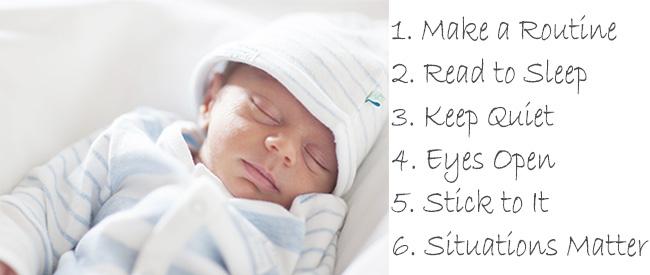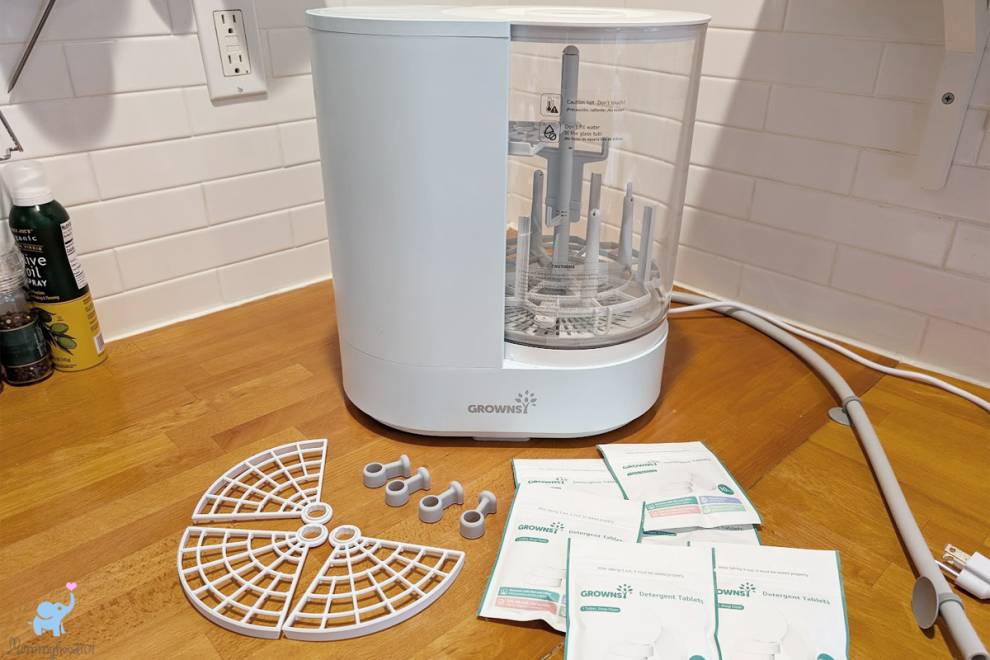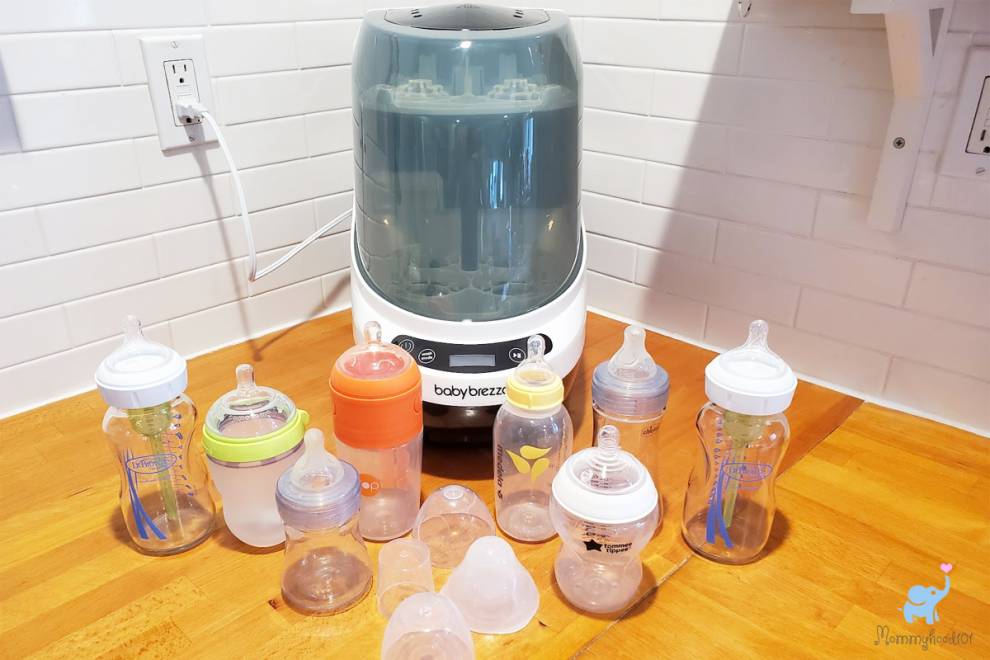Simple tricks to help your baby sleep alone, and give you a much-needed break.

Mommyhood101 independently tests and curates baby gear to help you make informed decisions. If you buy products through links on our site, we may earn a commission.
Helping your baby be comfortable and happy during bedtime is a long-term endeavor that requires a lot of dedication, tolerance, and sometimes total exhaustion!
Many moms start off putting their newborn baby to sleep by breastfeeding or bottle feeding, lulling them into sweet dreams while rocking them in their awesome nursery glider, or rocking them gently in a bassinet or baby swing.
A Better Sleep Solution
But soon your newborn will become a baby, and the baby will soon be a toddler. All those hour-long rocking sessions will not be so fun anymore, and you’ll be wishing you never taught your baby to only fall asleep after eating and rocking!
Pro-tip: Make a freebaby sleep schedule to help navigate naps, feedings, and bedtime!
As soon as the first week home with your baby, you want to establish a solid routine that helps your baby learn to self-soothe, regulate their emotions, and be a generally happier and well-rested baby.
You know what that means, right? It means you’ll be happier and better rested, and your family life (and career!) will benefit in spades. It’s a very important developmental skill for your baby to self-soothe, so the sooner you start, the better. There are a ton of sleep training programs out there, including the No-Cry Sleep Solution, the Sleepeasy Solution, Baby Sleep Solution, Happiest Baby on the Block, and many more.
The majority of these books rely on one simple thing that lies at the heart of all good sleep training: establishing a consistent bedtime routine. Below we list some very simple ways that you can help your baby establish a routine that helps them feel safe, secure, happy, comfortable, and most importantly, help them (and you) sleep! In addition to more traditional tips to help your baby fall asleep, here are 6 simple ways to teach your baby to fall asleep alone.

1. Make a Consistent Routine
Babies love routines and find them very comforting. When mom and dad establish a consistent routine, a baby can do a better job predicting what and when things will happen. Confusion and uncertainty cause stress for a baby, which causes poor quality sleep and headaches for everyone! Make a routine that can work with your unique family.
A good starting point is dinner time, a relaxing bath, infant massage, pajamas, reading a book, and then bedtime. This type of routine will give your baby consistent cues about what is coming next. It will take a while to establish a new routine like this, but if you stick with it you will soon be seeing huge benefits.
2. Don't Feed Your Baby to Sleep
Many new moms tend to nurse or bottle feed their babies, lulling them to sleep with gentle rocking and a full tummy. The problem is, feeding will become very strongly associated with sleeping, making it very difficult to break this habit as your baby gets older. When your baby is a couple of months old you won’t have a problem, but once you start weaning you’ll have a lot of trouble breaking the habit of eating with bedtime.
So, make a routine that involves mealtime before starting a bedtime routine (like bath, massage, pajamas, reading). That way, it will be easier to transition mealtime into your family’s regular dinner time, and your baby won’t be relying on the breast or bottle as a “sleep crutch.” A great idea is to read to your baby at bedtime, which will help your baby relax and associate story time with bedtime. This is a routine you can carry for several years and one that is great for developing early language skills!
3. Keep things Quiet and Relaxing
During your bedtime routine, be sure to speak only in a calm and soothing voice, shut off any electronics, and try to keep the dog and other kids quiet. The more relaxed and drowsy the baby is before getting into the crib, the more likely all of this will work! We suggest turning off the TV, and radio, and leaving your phone in the other room. Speak to your baby to tell them what’s happening during the routine, being sure to repeat simple phrases like “time for nighty-night” and “you’re so sleepy.”
Sometimes some white noise or other background noise is helpful. Some of the best baby monitors have white noise and lullabies that you can play to your baby to help lull them asleep, and an infant sound machine is a great option. We used a humidifier on the low setting year-round, which kept the nasal passages nice and moisturized while also providing a subtle background humming that many parents find helpful for minimizing other background noises. If you need one, check out our reviews of the best nursery humidifiers.
4. Eyes Wide (or Barely) Open
Instead of rocking, feeding, or reading your baby to sleep, try to teach your relaxed baby to fall asleep on their own. This is the biggest benefit of establishing a consistent bedtime routine: by the time your baby is put into the crib, they will be nice and relaxed and know exactly what is expected of them. If you can teach your baby to fall asleep on their own at a young age, many pediatricians suggest that you will find peace and quiet during the night for many years. This is because as they get older if they wake up in the middle of the night, they can self-soothe without needing mom or dad’s help.
5. Stick to It, and Don’t Lose Hope!
Once you start a new bedtime routine, stick to it for at least a month before giving up and trying something new. Some babies will transition smoothly to a new routine, while others will seem very stubborn and resist any changes you try to make. Hopefully, you’ll read this article early enough that you’ll be able to start this from birth, and won’t need to break any habits!
Even the most stubborn babies, and even babies with moderate sensory needs, will respond well to a consistent routine if you stick to it through thick and thin.
Many parents give up hope after a few failed nights of a new routine, and then end up going back to the old habits. They might give up because they feel guilty for letting a baby cry a bit, or fear that their baby feels abandoned or lonely. The truth of the matter is, the long-term consequence of establishing a consistent routine will be exactly the opposite: your baby will feel safe, cry less, be better at regulating their own emotions, and have higher quality sleep. Our advice is to start as early as possible with a healthy routine, and don’t lose hope in its eventual effectiveness!
6. Never a One-Size-Fits-All Solution
What we have presented here is not a “no-cry sleep solution” or “sleep training” solution. Rather, it is a way to establish a consistent routine that will help your baby predict what is expected of them and hopefully ends up sleeping better as a result. What that routine looks like exactly will be different for every baby and parent. The primary concerns we hear regarding our advice are:
I don’t have time to establish such a crazy routine! We completely agree that establishing a routine can seem daunting, and add yet another crazy demand to your already stressful lives. But remember that your routine can be simple. Maybe it’s just the massage and then bedtime. Maybe it’s just relaxing reading then bedtime. What you can accomplish will totally vary based on what works for your family and what your baby responds to, and that may vary on a daily basis. But getting a close approximation is good enough for most cases.
I don’t want my baby to cry it out! We don’t either. Our hope is that by establishing a consistent routine, your baby will be comfortable, tired, and feel safe when put down in the crib. During the first week of trying this, you will probably need to make some concessions for fussing. Maybe you’ll end up rubbing your baby’s belly a bit after putting him in the crib, maybe you’ll sit next to the crib for a few minutes singing a lullaby. Whatever you need to do, do it! Sometimes successive approximations toward not being in the room are necessary: singing a soft lullaby while rubbing tummy, then doing it while standing next to the crib, then doing it while sitting next to the crib, then halfway out the door, then not at all. It’s your baby, and your comfort level, so do what feels right!
But my baby’s different and this won’t work! We totally sympathize with this attitude, and you might be completely right. We do note that this approach works for most babies, but you might have a particularly difficult case. Colic, high sensory needs, or any other discomfort will make this process more difficult for some babies and parents. It might not work for you, and that is totally fine. Do what you think does work, and feel comfortable doing it!










